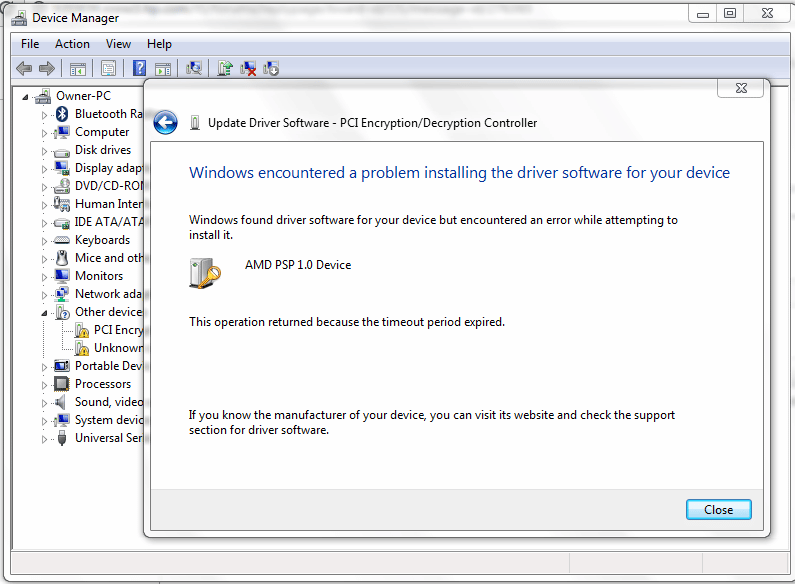The motherboard’s built-in PCI Encryption/Decryption Controller is in charge of keeping your data safe and preventing hackers from stealing it. It continually encrypts and decrypts data as the data is being transferred to ensure that a third-party source cannot access the data.
The PCI Encryption/Decryption Controller dramatically boosts the computer’s security protections. However, your machine would be exposed to online attacks if you were to encounter PCI Encryption/Decryption Controller issue. Additionally, the security of the data kept on the computer can be jeopardized.
Troubleshooting this issue should be your first priority if you observe a PCI Encryption/Decryption Controller error in the device manager. A hazardous sign appears next to the gadget under “other devices” to warn of the problem.
What is PCI Encryption/Decryption Controller?
The link between the PCI bus and the user interface is provided by the PCI controller, which is integrated into the motherboard. Since the PCI core interface is processor agnostic, switching between processor generations and using numerous processors is made easier.
PCI Encryption/Decryption Controller: What is it? Data security and data theft prevention are the responsibilities of the motherboard-preinstalled PCI Encryption/Decryption Controller. In order to prevent data from being accessed by outside sources, it continuously encrypts and decrypts data while it is being transmitted.
The PCI Encryption/Decryption Controller greatly enhances a computer’s security protections. However, your machine will be exposed to online dangers if you see PCI Encryption/Decryption Controller problems. Furthermore, information kept on the computer can be compromised.
What should you do if the “PCI Encryption/Decryption Controller” problem arises? The solutions are provided in the section after that.
What Causes of PCI Encryption/Decryption Controller Error?
Data in transit must be encrypted, and incoming data must be decrypted, by the PCI Encryption/Decryption Controller. However, if it’s not functioning correctly, the computer would encounter several issues. Users frequently get this problem when attempting to connect to the Internet, and unexpected crashes are also common.
Outdated PCI Encryption/Decryption Controller drivers are a major contributor to this problem. Fortunately, installing the most recent drivers seemed to fix the issue.
Malware: Given that this PCI controller is in charge of thwarting assaults from external sources, malware may have perturbed the controller and resulted in the malfunction. Additionally, the machine would be vulnerable to online assaults if the PCI controller was not functioning.
Ineffective Windows: The PCI controller is a key component of those upgrades as Microsoft adds new security measures to its OS with every Windows Update. Additionally, if you haven’t updated Windows in a while, the PCI controller issue can manifest.
Incompatible Chipset Drivers: Outdated chipset drivers were also to blame for the majority of Ryzen setups. Fortunately, the issue with the PCI controllers was fixed after the proper drivers were installed. Chipset drivers that are out-of-date or incompatible may also be to blame for this issue.
Hardware flaws: If the motherboard itself has a flaw, the issue could also manifest. The majority of the time, this problem could be caused by dirty motherboard components. Make sure the motherboard is clean and operating correctly before beginning difficult troubleshooting methods.
Fix Encryption/Decryption Controller Issues on Win11/10
Don’t worry if the PCI Encryption/Decryption Controller driver for Windows gives you trouble. You can repair it by reading the rest of this section.
Fix 1: Use Device Manager to update the driver
Step 1: To open this app, click the Search button in the Taskbar, type “device manager,” and then click the appropriate search result.
Step 2: Choose PCI Encryption/Decryption Controller.
Step 3: Next, right-click it and select Update driver.
Step 4: After that, you can select the option to have Windows automatically check your computer and the Internet for the most recent driver software for your device.
A newer update will be downloaded and installed automatically if there is one. After that, update Windows and see if the issue persists.
Fix 2: Locate the appropriate driver using the hardware id
Windows occasionally struggle to deliver the right driver. If you are unable to resolve your PCI Encryption/Decryption Controller problem, you can use its hardware ID to locate the appropriate driver. the following steps:
Step 1: Locate PCI Simple Communications Controller by opening the Device Manager program once more. Right-click it after that.
Step 2: Select the Details to tab in the Properties box. Select Hardware Ids from the Property menu.
Step 3: The hardware id should be clicked and then copied. (Copy the value that is the longest if there are multiple values.)
Step 4: Copy the hardware ID and paste it into your browser. To find a certain driver, use the search criteria hardware id+driver+Windows OS. The top link on the first result page will always be the one that leads to the appropriate result. The driver can then be downloaded by going to the URL and following the instructions.
The PCI Encryption/Decryption Controller problem can then be checked to see whether it has been resolved after that.
Final Words
These techniques can be used to resolve the “PCI Encryption/Decryption Controller” problem. You can decide whatever technique you wish to employ and test out.



